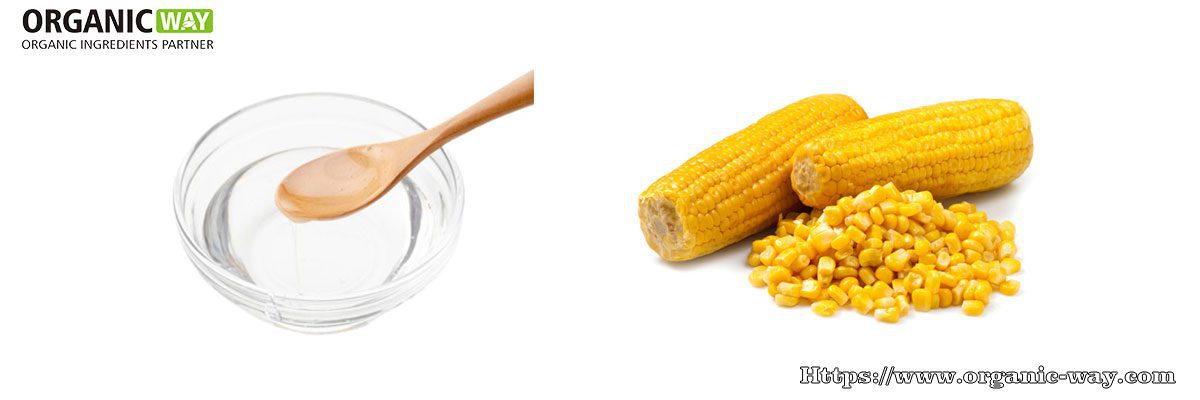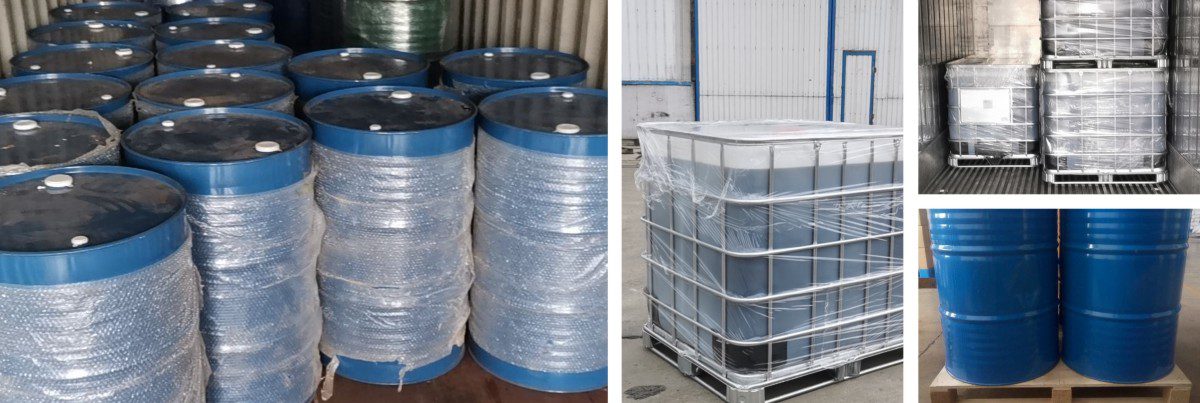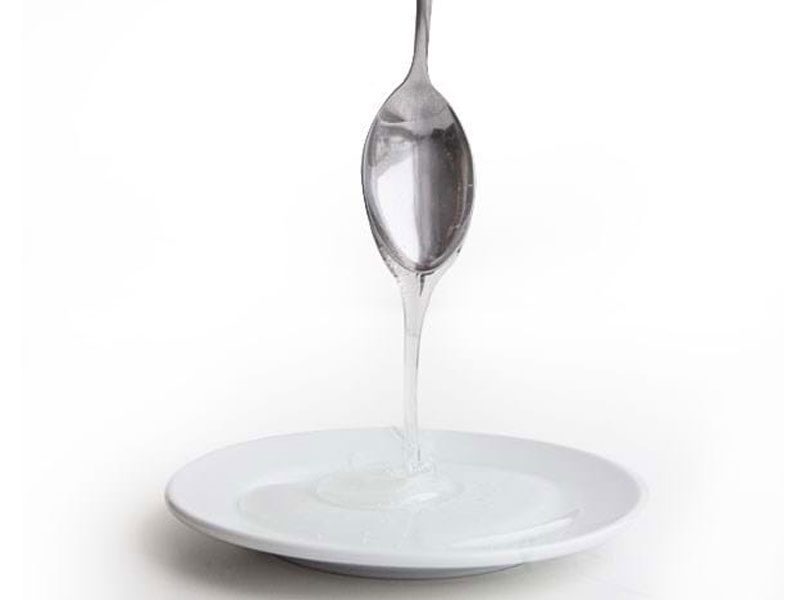Table of Contents
What is organic glucose syrup?
Organic Glucose Syrup is a high-quality, naturally sourced syrup produced from organic starch (typically corn or wheat). It is a clear, viscous liquid that is used extensively in the food industry as a sweetener, thickening agent, and moisture-retaining ingredient. Our Organic Glucose Syrup comes in two different specifications: DE20-40 and DE40-60, referring to the Dextrose Equivalent (DE), which indicates the level of sweetness and the degree of hydrolysis of the syrup. DE20-40 offers a milder sweetness, while DE40-60 provides a sweeter profile for products requiring higher sweetness or viscosity.
Both specifications are certified organic by USDA and EU standards, ensuring the absence of pesticides, GMOs, and synthetic chemicals. Our Organic Glucose Syrup is free from artificial additives, making it an ideal clean-label ingredient for various applications, including confectionery, beverages, baked goods, and more.

Key Features:
- 100% Organic: Certified organic by USDA and EU Organic standards, ensuring it is free from pesticides, GMOs, and synthetic chemicals.
- Dextrose Equivalent (DE) Variants: Available in two specifications – DE20-40 (mild sweetness) and DE40-60 (higher sweetness).
- Natural Sweetener: Derived from organic starch sources such as corn or wheat, offering a natural alternative to refined sugars and synthetic sweeteners.
- Moisture Retention: Helps to maintain the moisture content in products, preventing crystallization and extending shelf life.
- Versatile Functionality: Used for its sweetening, thickening, and binding properties in a variety of food and beverage products.
- Vegan & Gluten-Free: Suitable for vegan, vegetarian, and gluten-free diets.
- Non-GMO: Made without any genetically modified organisms.
Specification
| Dry Substance (%) | 79.0 – 81.5 | 79.0 – 81.5 |
| Dextrose Equivalent (DE) | 20 – 40 | 40 – 60 |
| pH (50% w/w solution) | 4.0 – 6.0 | 4.0 – 6.0 |
| Ash (% d.b.) | ≤ 0.5 | ≤ 0.5 |
| Color | Clear to yellowish | Clear to yellowish |
| Viscosity | High | Medium |
| Carbohydrate Profile (% d.b.) | DE 20-40 Specification | DE 40-60 Specification |
|---|---|---|
| Dextrose | 16 | 20 |
| Maltose | 12 | 15 |
| Maltotriose | 16 | 20 |
| Higher Saccharides (DP4+) | 56 | 45 |
| Heavy Metal | Maximum Limit (mg/kg) | |
| Lead (Pb) | ≤ 0.1 | |
| Cadmium (Cd) | ≤ 0.05 | |
| Mercury (Hg) | ≤ 0.01 | |
| Arsenic (As) | ≤ 0.1 | |
| Microbiological Parameter | Maximum Limit | |
| Standard Plate Count (cfu/g) | ≤ 1000 | |
| Yeast (cfu/g) | ≤ 100 | |
| Mold (cfu/g) | ≤ 100 | |
| Coliforms (cfu/g) | ≤ 10 | |
| E. coli (cfu/g) | Not Detected | |
| Salmonella (per 25g) | Not Detected | |
Health Benefits:
- Natural Sweetener: Organic glucose syrup is a natural alternative to refined sugars and artificial sweeteners. It provides a smooth, mild sweetness that blends well with other ingredients.
- Energy Source: Glucose is a simple sugar that is easily absorbed by the body and can provide a quick source of energy.
- Moisture Retention: Its ability to retain moisture makes it useful in products like baked goods, extending shelf life and preventing dryness or staleness.
- Improves Texture: It helps create smooth textures in a wide range of products, from candies and beverages to sauces and spreads.
- Prevents Crystallization: By inhibiting crystallization, organic glucose syrup helps achieve smooth and stable textures in candies, frostings, and confections.
- Suitable for Sensitive Diets: Being vegan, gluten-free, and non-GMO, it is suitable for a wide range of dietary needs.
Applications:
Food & Beverage:
- Confectionery: Used in making candies, caramels, gummies, and other confectionery items to control sweetness and texture.
- Baked Goods: Ideal for improving moisture retention and preventing crystallization in cakes, cookies, and breads. It also helps achieve a tender texture.
- Sauces & Dressings: Enhances the smooth texture and consistency of sauces, gravies, and salad dressings.
- Beverages: Aids in sweetening soft drinks, fruit juices, energy drinks, and health drinks while providing consistency and texture.
- Frozen Desserts: Used in ice creams, sorbets, and frozen yogurts to prevent ice crystal formation and provide a smooth mouthfeel.
- Jam & Jelly: Helps to create a smooth, non-crystallizing gel in jams, jellies, and spreads.
Health Foods & Supplements:
- Energy Bars & Snacks: Provides a quick energy source in energy bars and snacks, aiding in quick digestion and absorption.
- Sports Nutrition: Used in recovery drinks and energy gels to replenish glucose levels after intense physical activity.
- Dietary Supplements: Can be used as a carrier for active ingredients in health supplements, ensuring smooth and uniform texture.
Personal Care & Cosmetics:
- Skin Care: Organic glucose syrup is used in moisturizers, lotions, and creams for its humectant properties, helping to draw moisture into the skin and keep it hydrated.
- Hair Care: Adds moisture and smoothness to hair care products, enhancing texture and shine.
Why Choose Our Organic Glucose Syrup?
Our Organic Glucose Syrup offers a clean, natural solution for a variety of applications in the food, beverage, and personal care industries. With two different DE specifications, it provides flexibility in formulating products with different sweetness profiles and viscosities. Sourced from organic starches, it is a safe, gluten-free, and non-GMO alternative to conventional syrups. Its superior functionality in moisture retention, texture, and sweetness makes it an ideal choice for clean-label products and applications where quality and sustainability are top priorities.
FAQs
Q: Is organic glucose syrup the same as corn syrup?
A: Yes, but organic versions use non-GMO crops and avoid synthetic processing aids.
Q: Can diabetics consume organic glucose syrup?
A: While lower glycemic than sucrose, moderate consumption is advised. Consult a healthcare provider.
Q: Is it suitable for vegan diets?
A: Absolutely! It’s 100% plant-derived and cruelty-free.
Q: How does it differ from organic agave syrup?
A: Glucose syrup is less sweet, thicker, and better for texture control, while agave is higher in fructose.
Q: Can I use it in sugar-free products?
A: No—glucose syrup contains carbohydrates. Pair with low-calorie sweeteners (e.g., allulose) for reduced-sugar formulations.
Packing

